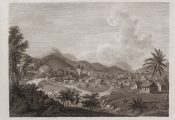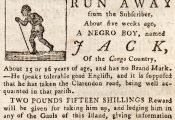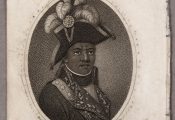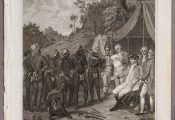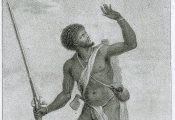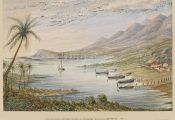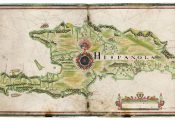Although she is a national hero in Jamaica, little is known with certainty about Nanny’s life. She is a mythical as well as a legendary figure and it is therefore often difficult to establish historical fact.
It is not even certain if she was born in Africa or in Jamaica, and whether she was born enslaved or free. There are also conflicting reports about the date and nature of her death. According to some historians, it is even possible that there were several significant women leaders who have come to be collectively known as Nanny.
What is certain is that rebellion against slavery existed in Jamaica from the time that the first enslaved Africans were imported by the Spanish. By the early 18th century, when the island was in the hands of the British, there were rebel towns and maroon settlements all over the island. Well organised and defended, the maroon villages were typically located high up in the mountains with only narrow paths leading to them. Consequently, British soldiers could be clearly seen as they approached.
African links
Nanny is often associated with other maroon leaders of the 18th century who retained African names, including Cudjoe, Accompong, Cuffee and Quaco. Whether Nanny was, in fact, related to any of them remains open to question.
What is clear is that Africans who originated from present-day Ghana played a significant role in the leadership of Jamaican maroon communities. Their culture and language also contributed greatly. Known as a religious as well as a political leader, Nanny was said to have magical powers that allowed her to repel the bullets of the British and protect other maroons.
The fight begins
By 1720, Nanny had taken control of the Blue Mountain rebel town that then became known as ‘Nanny Town’. Located on a ridge, it became a maroon stronghold with guards placed at look-out points. Maroon soldiers were called by the blowing of a horn of African origin called an abeng.
Skilled in guerrilla warfare, Nanny is said to have trained her maroon troops in the art of camouflage, covering them with branches and leaves and instructing them to stand still and resemble trees. The soldiers raided plantations and would then burn the estates and carry off arms, food and captives whom they set free on the understanding that they joined the maroons.
Survivors
For six years from 1728, the British fought Nanny and her forces. Using cannon, they captured Nanny Town, and in 1734, Captain Stoddard, the British commander, reported that ‘all the maroons had been killed’. There were in fact, survivors- the British pursued them and destroyed all the crops in the region. In some reports, Nanny and some of her followers escaped and made a new hideout near the Rio Grande.
Later that year, Nanny’s sent a party of maroons to join those in the west of the island. Thus some 300 men, women and children set out on one of the longest marches in Jamaican history. Eventually reaching St James, they wanted to unite with Cudjoe’s soldiers, but he refused the alliance. Nanny’s people went back to Portland.
Obstacle to freedom
In 1739, when Quaco signed the second treaty with the British, it is reported that Nanny disagreed with the principle of peace with them. The treaty was indeed a retrograde step. It guaranteed the security and the right to land for the maroons but only on the condition that they returned other escapees. This turned the maroons into an unofficial police force serving British interests.
After the treaty, they became an obstacle to the freedom and independence of other slaves in Jamaica while they participated in British-led massacres against rebelling slaves. However, the treaties signed in the 1730s only brought peace for a limited period. A major new war between the Jamaican maroons and the British broke out in the 1790s.
Despite conflicting reports about her life, Nanny has remained a powerful symbol of the maroon resistance to slavery.
